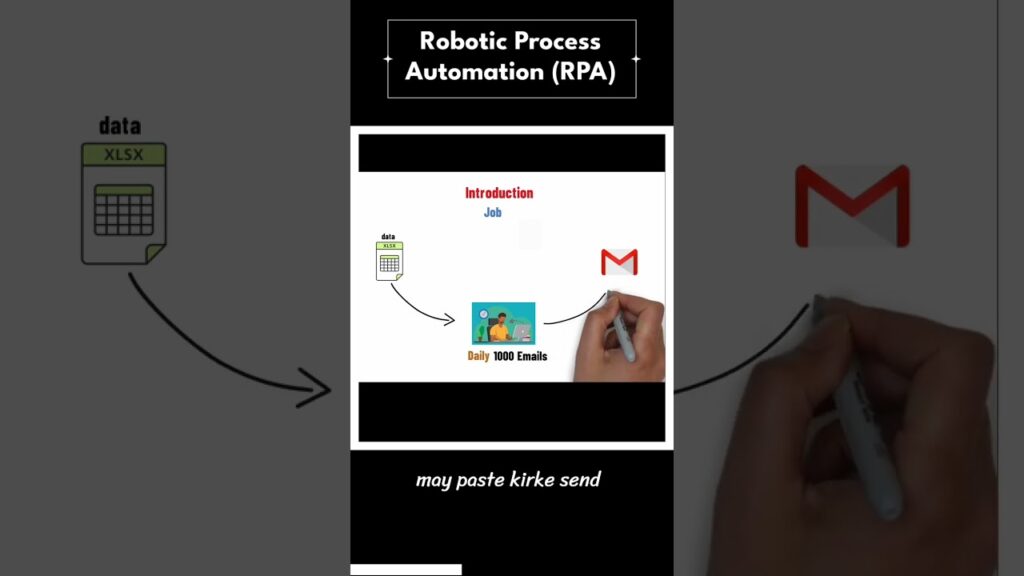Robotic Process Automation: Revolutionizing Workforce Efficiency
Robotic Process Automation (RPA) has gained significant recognition in recent years as businesses across various industries seek ways to optimize their operations and drive efficiency. In this article, we will explore the concept of RPA and its potential implications for businesses in the digital age.
RPA, as the name suggests, entails the use of software robots or "bots" to automate repetitive tasks and streamline business processes. These bots are capable of mimicking human interactions with various software applications, enabling them to perform tasks such as data entry, data manipulation, and even customer service interactions. By automating these mundane and time-consuming tasks, organizations can free up their employees' time to focus on more value-added and strategic activities.
The concept of RPA is not entirely new; it has evolved from technologies such as screen scraping and workflow automation. However, recent advancements in artificial intelligence (AI) and machine learning have propelled RPA to new heights, making it more intelligent and capable than ever before.
The benefits of implementing RPA are manifold. First and foremost, it offers significant cost savings by reducing the need for manual labor and minimizing human errors. Additionally, RPA helps improve accuracy and compliance by executing tasks with precision and adhering to predefined rules and regulations. Furthermore, it enhances operational efficiency and scalability by enabling organizations to handle higher volumes of work without the need for additional human resources.
One of the key advantages of RPA is its compatibility with existing IT infrastructure. Unlike traditional automation approaches that require extensive modifications to existing systems, RPA can be seamlessly integrated with existing applications, allowing for a rapid and cost-effective implementation. This means that businesses can start reaping the benefits of RPA without undergoing major system overhauls.
The potential use cases for RPA span across a wide range of industries. From financial institutions automating their account reconciliation processes to healthcare providers streamlining patient data management, RPA offers immense value across the board. By automating repetitive tasks, organizations can achieve increased productivity, reduced turnaround times, and improved customer satisfaction.
However, it is essential to note that RPA is not a one-size-fits-all solution. Organizations need to carefully analyze their business processes to identify suitable opportunities for automation. It is crucial to strike a balance between automation and human intervention to ensure optimal outcomes. RPA should be viewed as an enabler rather than a replacement for human workers, as it frees up their time to focus on complex problem-solving and critical thinking tasks.
As with any emerging technology, RPA also presents its fair share of challenges. One of the primary concerns is the potential displacement of jobs. While RPA does automate repetitive tasks, it also creates new roles that require more advanced skills, such as bot monitoring and management. Organizations must prioritize upskilling and reskilling their workforce to ensure a smooth transition and maximize the potential of RPA.
Moreover, data security and privacy concerns are of paramount importance when implementing RPA. Organizations need to adopt robust security measures to protect sensitive data from potential breaches and ensure compliance with relevant regulations.
In conclusion, Robotic Process Automation has emerged as a groundbreaking technology that has the power to transform businesses across various industries. By automating repetitive tasks and streamlining workflows, RPA enables organizations to achieve significant cost savings, enhance operational efficiency, and drive overall productivity. However, successful adoption of RPA requires a careful analysis of business processes, upskilling of employees, and implementation of robust security measures. As organizations venture into the digital age, RPA serves as a powerful tool to optimize workforce efficiency and drive sustainable growth.
Industrial Robot
Introduction to RPA: Automating Processes with Robots (in Hindi!)


